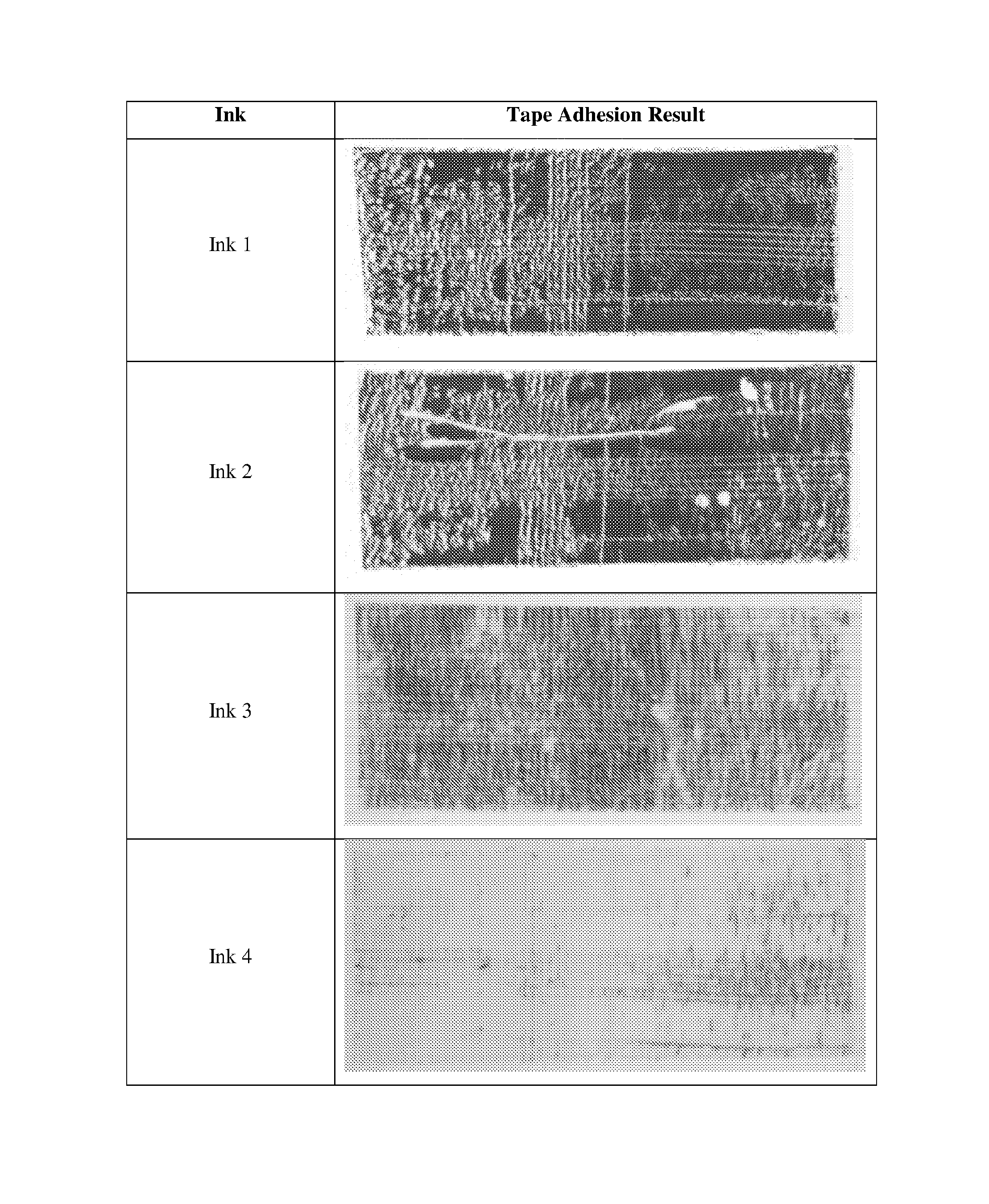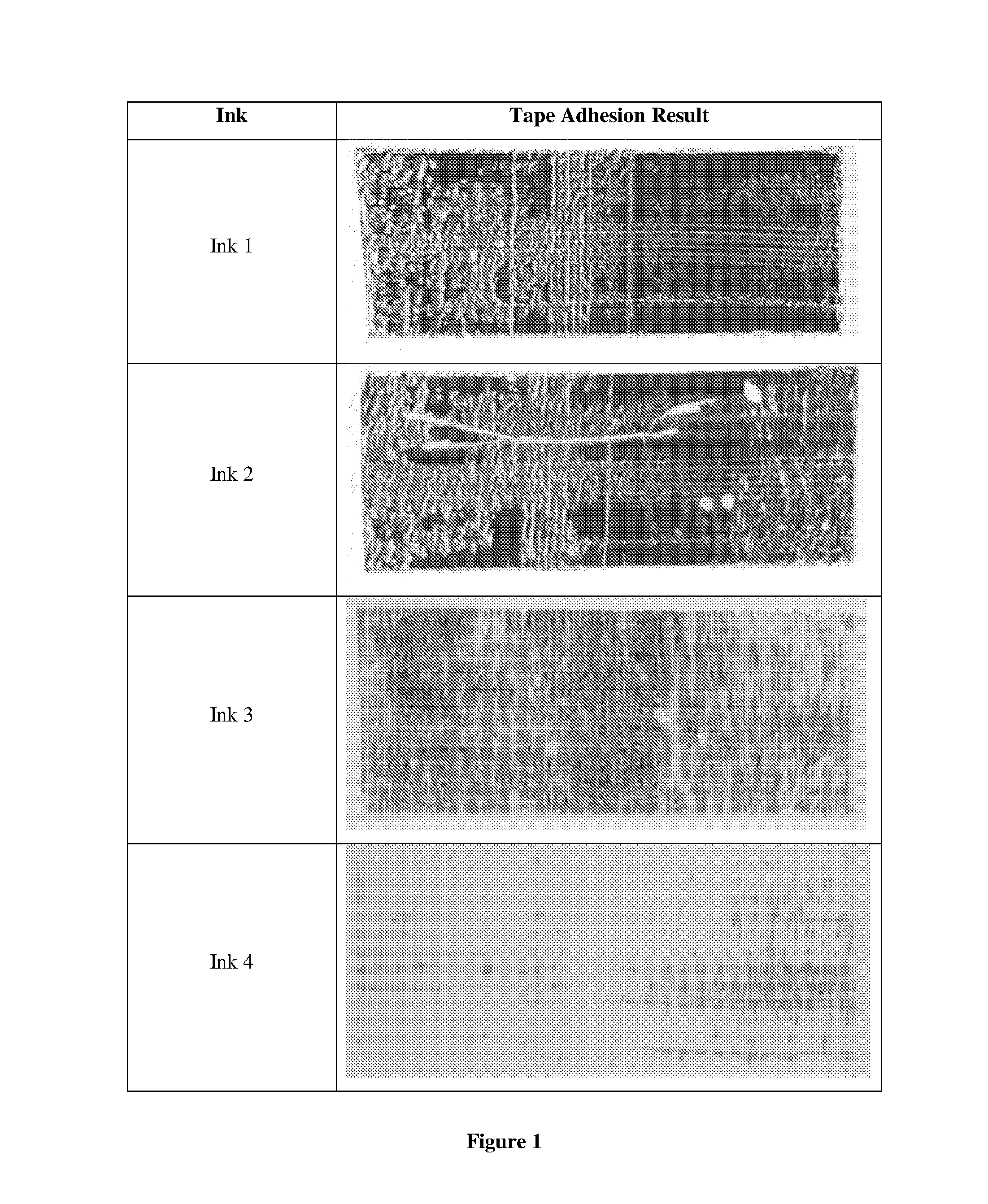Inkjet ink composition
- Summary
- Abstract
- Description
- Claims
- Application Information
AI Technical Summary
Benefits of technology
Problems solved by technology
Method used
Image
Examples
example 1
[0087]A set of Thermal inkjet inks suitable for printing onto semi-porous and non-porous substrates were prepared using the formulations shown in Table 1.
TABLE 1Ink 1(Control)Ink 2ComparativeComparativeComponentExampleExampleInk 3Ink 4Ethanol / %34.033.532.532.0Propyleneglycol49.549.549.549.5monomethyl ether / %1,1,2,2-11.411.411.411.4Tetramethoxyethane / %Surfactant / %0.10.10.10.1Acrylic binder / %—0.5—0.5Dertophene T / %——1.51.5Dye / %5.05.05.05.0
[0088]The percentages (%) are percentages (%) by weight based on the total weight of the composition.
[0089]The acrylic binder used was a methacrylate copolymer. The dye was solvent black 27. The surfactant was BYK-333, a Polyether-modified polydimethylsiloxane.
[0090]To assess the decap performance thermal inkjet cartridges were filled with each ink and 2D datamatrix codes were printed at 600×200 dpi. Each cartridge was then left with the nozzles exposed to the air for predetermined periods of time without printing or spitting the nozzles. After each t...
example 2
[0096]A further example of a thermal inkjet ink suitable for printing onto semi-porous and non-porous substrates was prepared using the formulations shown in Table 5.
TABLE 5ComponentInk 5Ethanol / %43.9Propyleneglycol monomethyl ether / %37.11,1,2,2-Tetramethoxyethane / %11.4Surfactant / %0.6Acrylic binder / %0.5Dertophene T / %1.5Dye / %5
[0097]The acrylic binder was a methacrylate copolymer. The dye was solvent black 27. The surfactant used was a combination of BYK-333 and Tego Glide 440, a polyether siloxane copolymer.
[0098]Decap measurements for Ink 5 were carried out using the method described above for the Example 1. The results are provided below in Table 6.
TABLE 62D Datamatrix Grade After Decap PeriodInk15 seconds1 minutes2 hours16 hours5CBBB
[0099]While a specific embodiment has been described in detail above, it will be apparent to those skilled in the art that the disclosed embodiment may be modified using different ink formulations in alternative Thermal Inkjet printing heads.
PUM
| Property | Measurement | Unit |
|---|---|---|
| Fraction | aaaaa | aaaaa |
| Fraction | aaaaa | aaaaa |
| Fraction | aaaaa | aaaaa |
Abstract
Description
Claims
Application Information
 Login to View More
Login to View More - R&D
- Intellectual Property
- Life Sciences
- Materials
- Tech Scout
- Unparalleled Data Quality
- Higher Quality Content
- 60% Fewer Hallucinations
Browse by: Latest US Patents, China's latest patents, Technical Efficacy Thesaurus, Application Domain, Technology Topic, Popular Technical Reports.
© 2025 PatSnap. All rights reserved.Legal|Privacy policy|Modern Slavery Act Transparency Statement|Sitemap|About US| Contact US: help@patsnap.com


